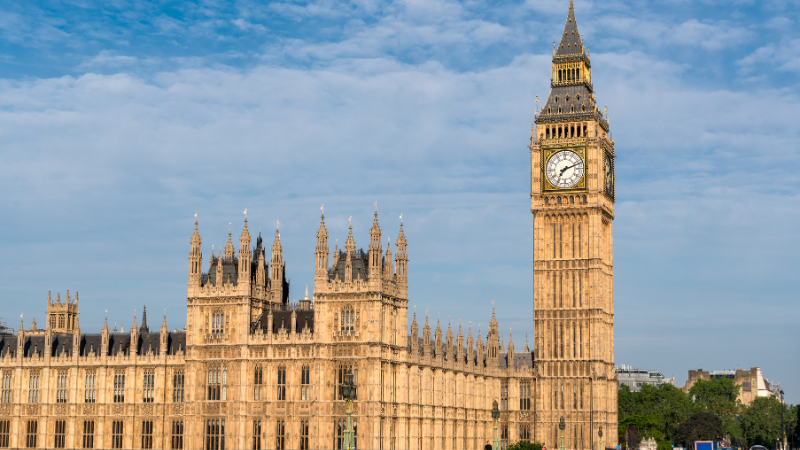Categories
How To Reduce Your Business Carbon Footprint

The UK is committed to reaching net-zero by 2050, with an interim carbon target of 68% by 2030. Standing at the centre of this determination to focus on decarbonisation are UK businesses, with eyes turned to every sector to see how improvements can be made.
From manufacturing to logistics, marketing to hospitality, every area of the UK corporate space is under pressure to make significant changes and, most importantly, to take responsibility at every level for meeting these national and international requirements.
This complete guide covers the three scopes of the Greenhouse Gas (GHG) Protocol, and includes actionable advice on how to significantly reduce business carbon.
Key Takeaways
- Decarbonisation focuses on the three core scopes of the GHG Protocol.
- With multiple ways to improve your carbon footprint, there are flexible avenues to meet government regulations.
- Meeting your ESG targets may take investment today, but will pay off in the future.
- Working with Clifton Business Energy gives you expertise and a clear plan for comprehensive decarbonisation.
Table of Contents
The Three Scopes of the Greenhouse Gas (GHG) Protocol
When considering reducing business carbon, it is vital to understand the three scopes of the Greenhouse Gas (GHG) Protocol. These provide a frame for the different levels of emissions your company is responsible for.

Scope 1: Direct emissions
These are carbon emissions from sources that your company directly controls, for example:
- Fuel emissions from your fleet of vehicles - the petrol or diesel used by company-owned vehicles.
- Gas emissions from heating - on-site boilers burning natural gas.
- On-site equipment emissions - the ovens for a catering firm, or diesel-powered generators used by a construction company.

Scope 2: Indirect emissions from purchased energy
Although your business doesn’t generate electricity directly, you’re still responsible for its environmental impact. Not all energy suppliers are equal when it comes to sustainability, so shop around - or, get us to do it for you.

Scope 3 - Indirect emissions linked to your business
This mostly refers to emissions caused by others in your supply chain, but also includes anything not previously covered in Scopes 1 and 2.
Examples include:
- Emissions from your supplier - The carbon footprint from the manufacture of goods or equipment that you buy.
- Business travel - The emissions caused on flights or train travel.
- Waste disposal - Transporting and processing your business waste, as well as recycling and landfill emissions.
- Product use by your customers - The end-of-life treatment and disposal of items you have created and sold.

Scope 1 Reductions - The Low-Hanging Fruit
You are completely in control of your scope 1 emissions. When considering reducing your business carbon footprint, these are the easiest ones to control - the low-hanging fruit. With a solid plan in place, it is possible to reduce scope 1 emissions relatively quickly, bringing you in line with government targets.
Here are 3 of the most powerful actions you can:

Electrifying Your Fleet
For many businesses, a significant portion of scope 1 emissions lies with their fleet of vehicles. Diesel and petrol powered cars and vans contribute significantly to your carbon footprint and it’s a situation that can be easily solved by moving to an electric vehicle (EV) fleet.
This investment doesn’t need to be a major capital investment. As leases on current vehicles end, simply opting for an electric vehicle as a replacement keeps the costs similar - plus there are savings to be made on fuel costs.
It should be quickly understood that by electrifying your fleet, you do not completely remove the emissions problem - you merely switch it from a scope 1 responsibility, to a scope 2 emission.
However, this is not without benefit. If you have chosen a responsible energy supplier who is dedicated to ecologically sound practices, your overall emissions will lower considerably. The carbon emissions per mile of travel when using responsible energy are significantly better than running a petrol or diesel vehicle.

Upgrade Equipment
Like in the automotive sector, work is being done constantly across the range of equipment manufacture to improve the carbon footprint on items, from hot water and central heating boilers, through to specialist factory machinery. Creating a plan to replace outdated equipment with greener alternatives will help you limit your scope 1 emissions.

Monitoring and Limiting Usage
Properly assessing your usage and setting sensible limitations to minimise wastage can have a significant effect. This can include simple things, like turning lights off in areas when not in use, through to more complex plans for energy monitoring and maintenance.
Scope 2 Reductions - Choosing Your Business Energy Supply
Businesses use a significant amount of energy. Taking care to select an energy supplier who meets your need for scope 2 reductions is key to effective decarbonisation. However, it is not always easy.
Selecting your energy supplier, therefore, should be more than simply opting for the most cost-effective option; it should also be determined based on the supplier’s own green responsibilities. Carbon neutral suppliers utilise wind, solar, and hydro energy, as well as working responsibly in the nuclear sector. Moving away from fossil fuels to renewable sources is at the core of modern responsible energy.
Sustainable energy suppliers that have a focus on their ecological impact often offer superior data tracking and transparency, tools that can be extra helpful in determining your own carbon footprint. They will also use advanced technology to improve their service, making integration and administration more effective.

Scope 3 Reductions - A Wider Perspective
Bringing your scope 3 emissions in line is a more complicated task that typically involves a comprehensive and holistic plan that impacts several areas of your business operations.
Here are 5 broad examples and key factors:

Data Acquisition and Analysis
Firstly, to properly develop a scope 3 reductions plan, it is necessary to obtain detailed information regarding your scope 3 emissions. Effectiveness relies on accurate primary data from your suppliers to determine the right areas on which to focus. This may include such things as:
- Carbon footprint statistics gathered for flights and other business travel.
- Emissions information provided by direct suppliers.
- Full emissions data from waste management.
- Comprehensive green statistics from logistics partners.
Communication with Partners
One of the key ways to lower scope 3 emissions is through direct discussion with suppliers and other partnered companies regarding their own green responsibilities, encouraging network-wide actions to limit emissions.
This often results in a unified effort to lower the environmental impact for an entire supply chain or the re-evaluation of suppliers and switch to alternate partners in cases where resistance is met.

Working with Green Freight
Engaging directly with environmentally responsible freight forwarders and logistics suppliers will ensure that your shipping emissions are lowered. Quality freight forwarders can offer multi-mode and consolidated shipping that both lowers your scope 3 emissions but is also far more cost effective.
Care should also be taken to improve packaging, avoiding waste wherever possible.

Improved Product Design
Ensuring that your own products have a low environmental impact is essential. Products should be considered with a full life cycle perspective, developed so that emissions are lowered in their creation but also so end-of-life is properly considered.
Adequate solutions to disposal, with potential reuse and recycling solutions, should form part of the full product plan.

Reducing Travel
With modern communication technology extremely efficient, the need for business travel is significantly lowered.
Properly considering the impact of any business travel should be a core part of your scope 3 reduction plan, limiting travel to when strictly necessary and choosing transport that balances cost and carbon impact.

The Advantages of Reducing Your Business Carbon Footprint
Developing and actioning a thorough decarbonisation plan requires both time and capital investment, however, there are multiple advantages that your business will gain from:
- Full regulatory compliance - By decarbonising, you will conform to the relevant government regulations. Proactively assessing and improving your environmental impact ensures compliance for the foreseeable future.
- Increased brand loyalty - With an increasingly-savvy audience who are keen that the brands they use are looking at their green responsibilities seriously, all companies benefit from showing a mature and compliant attitude to environmental issues.
- New innovations - Analysing data and focusing on decarbonisation will result in innovation in many aspects of your business, boosting efficiency, improving products, and ultimately increasing profit.
- Staff and shareholder engagement - As with audience loyalty, both company staff and shareholders will respond well to improved environmental responsibility.
- Improved supply chain - A decarbonisation-focused supply chain audit will help discover inefficiencies in existing processes, leading to a more stable, more cost-efficient, and less risky supply model.
- Greater profits - While in the short term, investment may be required, the long-term prospects for company’s that move to a fully-sustainable decarbonised model are generally positive, with financial gains from efficiency, improved processes, and customer acquisition all likely.
Decarbonisation with Clifton Business Energy
Clifton Business Energy provides experienced consultancy regarding your energy consumption and business greenhouse gas emissions. With a focus on Scope 2 improvements through tailored carbon-neutral energy solutions, our team will work for you to put together a comprehensive package for energy supply improvements.
We have the expertise you need to manage complex multi-meter, multi-site installations with unique and specific power requirements.
Propel your business into a responsible carbon-neutral future by speaking to one of our specialists today.









